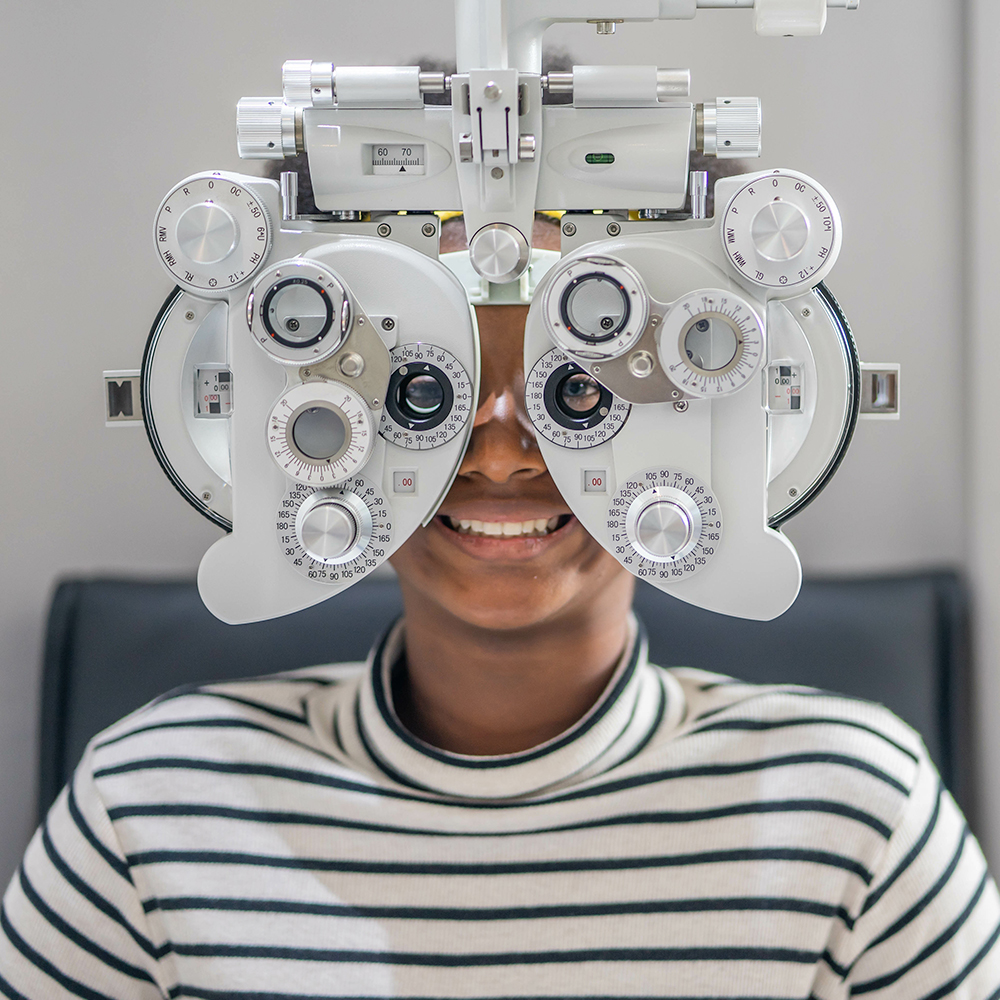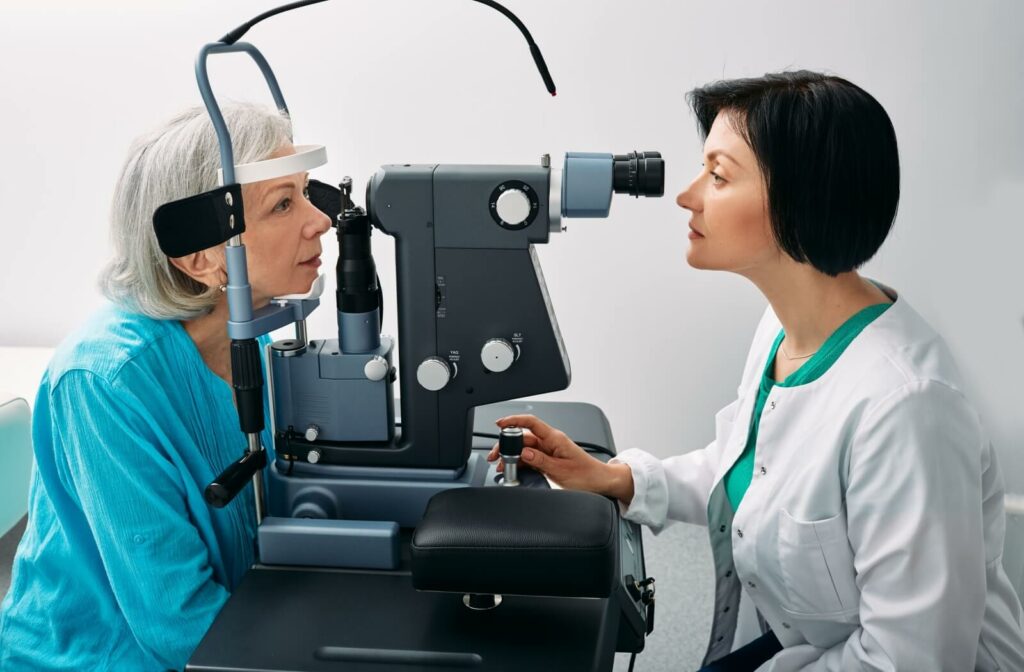How an Eye Doctor Can Help Avoid Vision Complications in Chino
How an Eye Doctor Can Help Avoid Vision Complications in Chino
Blog Article
Discovering the most recent Technological Developments in Optometry and What They Mean for Optometrists
From the precision of Optical Coherence Tomography to the nuanced understandings provided by AI-driven analysis devices, these developments are establishing brand-new requirements in individual assessment and treatment. As these innovations permeate the method, optometrists are encountered with the obstacle of embracing these tools to improve individual results.
Technologies in Diagnostic Equipment
Progressing the area of optometry, developments in analysis devices have actually transformed the means eye care experts evaluate and identify eye conditions and aesthetic problems. The previous years has actually witnessed significant technological innovations, making it possible for even more detailed and accurate assessments. Optical Comprehensibility Tomography (OCT), as an example, offers high-resolution cross-sectional photos of the retina, enabling the very early discovery of diseases such as glaucoma and age-related macular deterioration. This non-invasive imaging strategy has actually come to be indispensable in modern optometric method.
One more secret innovation is the introduction of advanced corneal topography systems, which map the surface area curvature of the cornea with precision. These devices are particularly beneficial for fitting call lenses and diagnosing corneal conditions. Electronic retinal imaging has actually changed traditional ophthalmoscopy, providing thorough, breathtaking views of the retina that assist in thorough visual evaluations.
The development of wavefront aberrometry has likewise been critical, enabling the analysis of refractive errors with unequaled precision (Eye Doctor). This technology aids in tailoring rehabilitative lenses and enhancing surgical results for refractive surgical procedures. Jointly, these analysis developments equip optometrists to provide exceptional individual care, ensuring very early intervention and customized therapy approaches, inevitably boosting aesthetic health outcomes
AI in Individual Management
Building on the foundation of advanced diagnostic devices, the incorporation of synthetic intelligence (AI) in patient management represents a transformative jump for optometry. AI systems are significantly utilized to improve effectiveness, accuracy, and personalization in individual care. By analyzing vast quantities of information, AI can identify patterns and anticipate potential ocular conditions, making it possible for eye doctors to tailor treatments better. This capacity is vital in managing persistent eye illness such as glaucoma and diabetic retinopathy, where early detection and continual tracking are key.
In addition, AI-driven platforms facilitate streamlined person interactions and management processes. Automated organizing, digital examinations, and personalized follow-up plans not just improve individual fulfillment but also maximize time management for experts. These systems can triage patients based upon the necessity of their problems, ensuring that those in essential demand get punctual focus.
Additionally, AI boosts decision-making by providing eye doctors with evidence-based recommendations and treatment pathways. By incorporating data from electronic wellness records, AI devices use insights that notify scientific decisions, decreasing the threat of errors and boosting individual results. As AI remains to progress, its function in individual management will likely broaden, improving the landscape of optometric treatment.
Advances in Retinal Imaging
In the realm of optometry, retinal imaging has witnessed amazing technological developments that are improving analysis capacities and client care. Developments such as Optical Coherence Tomography (OCT) and fundus photography have actually revolutionized how optometrists imagine and examine the retina. OCT, particularly, offers high-resolution, cross-sectional photos of the retina, permitting the thorough evaluation of its layers. This capacity is invaluable for very early discovery and administration of problems like glaucoma, diabetic retinopathy, and age-related macular degeneration.
Improved imaging modalities like OCT angiography are more refining diagnostic precision. This non-invasive technique maps blood flow in the retina, providing crucial insights right into vascular health and wellness without the demand for color shots. Additionally, adaptive optics technology is being incorporated into retinal imaging systems to remedy eye aberrations, supplying unmatched photo clearness. Such innovations assist in the recognition of min retinal adjustments that might indicate illness progression.
In addition, improvements in man-made intelligence are augmenting retinal imaging by making it possible for automatic evaluation of huge datasets. These systems help optometrists in recognizing patterns a sign news of pathology, thus enhancing analysis accuracy and performance. Collectively, these developments are transforming retinal imaging right into a keystone of modern eye treatment, enhancing end results and expanding therapeutic opportunities.
Teleoptometry's Growing Function
Teleoptometry is progressively ending up being a crucial component of eye care, driven by innovations in digital communication and diagnostic devices. This is specifically helpful in underserved and country locations where access to specialized eye treatment is commonly minimal.
The integration of expert system (AI) further enhances teleoptometry, allowing the analysis of visual data and assisting in the discovery of ocular problems such as glaucoma and diabetic person retinopathy. AI-powered algorithms can quickly analyze complex imaging data, giving optometrists with important insights that strengthen medical decision-making.
Additionally, teleoptometry sustains connection of care with seamless integration with electronic health documents (EHRs), enabling eye doctors to keep thorough person backgrounds. This guarantees that patients receive consistent and customized treatment also when speaking with various experts.
In spite of these advantages, challenges remain, consisting of making certain data safety and security and taking care of patient expectations. Nonetheless, teleoptometry represents a considerable stride in the direction of more available, effective, and patient-centered eye care. As modern technology develops, its duty is poised to increase additionally.

Future Trends in Eye Care
A myriad of ingenious trends is readied to improve the future of eye care, driven by technological developments and the progressing needs of patients. One substantial fad is the combination of expert system (AI) in diagnostics, which guarantees to improve the accuracy and performance of eye examinations. AI algorithms can evaluate substantial quantities of information from retinal images, possibly spotting problems like diabetic person retinopathy and glaucoma earlier than traditional methods.
Moreover, tailored medication is obtaining traction in optometry, with genetic testing informing personalized therapy strategies. This approach intends to maximize patient outcomes by customizing treatments to specific genetic accounts. Wearable technology, such as wise call lenses, is likewise on the perspective, offering real-time tracking of intraocular pressure or sugar degrees, therefore offering continual insights into systemic and ocular health.
The fostering of augmented reality (AR) and virtual fact (VIRTUAL REALITY) in training and patient education is an additional emerging trend. These innovations use immersive experiences that can enhance understanding and skills both for individuals and eye doctors. As these patterns progress, optometrists need to remain abreast of technical developments to offer sophisticated treatment, ensuring enhanced client end results and complete satisfaction in the dynamic landscape of eye treatment.
Final Thought

Jointly, these analysis innovations equip eye doctors to deliver superior client treatment, making sure very early intervention and customized therapy approaches, inevitably boosting aesthetic wellness end results.

As these modern technologies continue to evolve, optometrists must adapt and integrate them into method, inevitably enhancing workflow effectiveness and boosting the standard of eye care provided to people.
Report this page